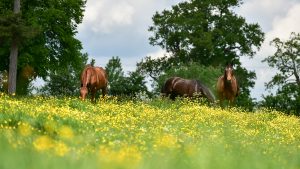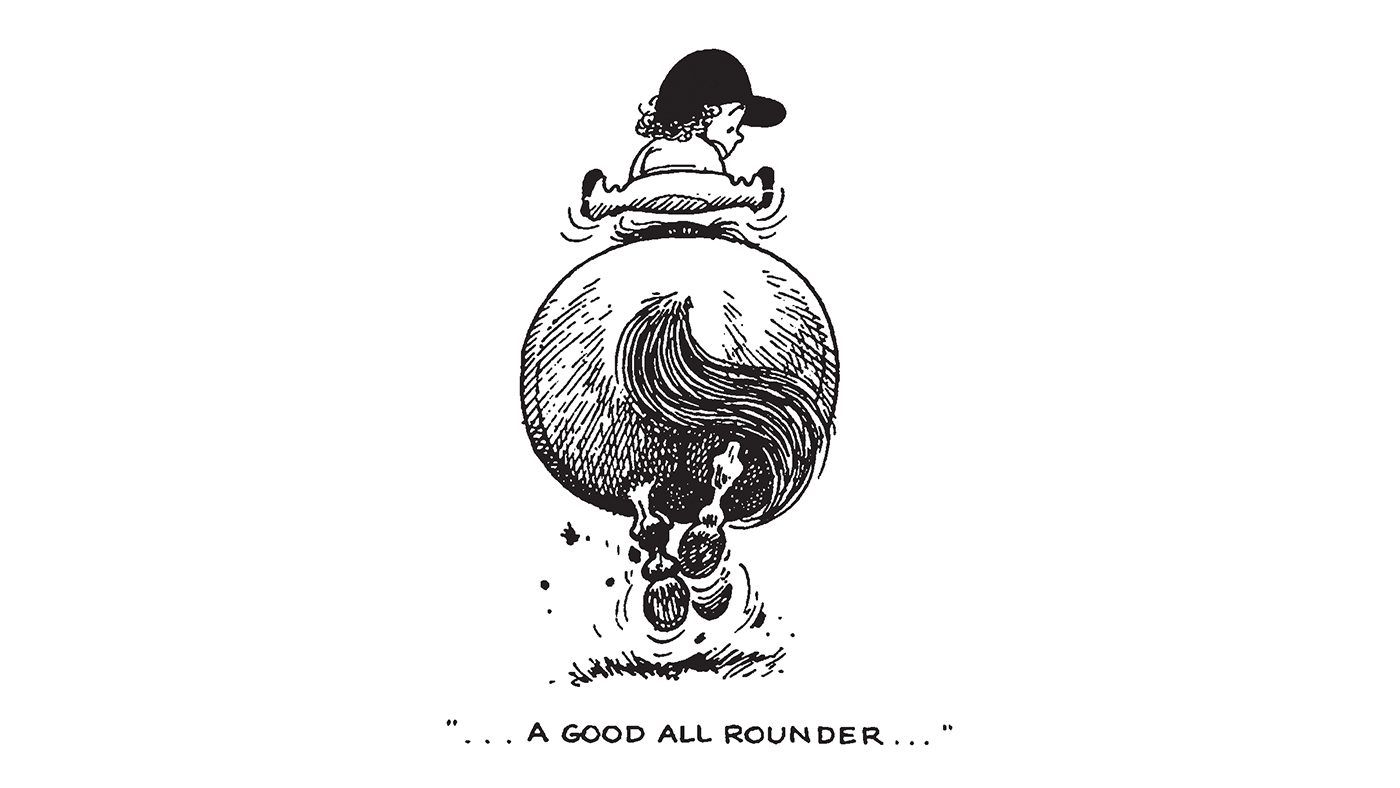How to keep your horse healthy during a flush of fresh grass growth *Promotion*
Advertisement feature with NAF

Kate Hore RNutr(Animal). Snr Nutritionist at NAF
As the weather warms the soil, and plenty of spring-like rain waters it, the inevitable flush of grass will be bursting through, bringing those lush, green swards of pastures, so typical of this time of year. But what does that mean for our equines’ diets and how can we manage it?
Due to the uncharacteristic wet, seasonal weather carrying through to summer, the current grass is relatively high in water soluble carbohydrates (WSCs) providing plenty of energy (calories), alongside higher levels of protein from growth and repair. This natural boost is perfectly timed for some groups, such as lactating mares or hard working equine athletes, but for other equines it can set alarm bells ringing.
Our native breeds evolved to survive in harsh climates where they would naturally drop condition over winter, meaning the spring grass was perfect for recovery. However in modern management, where good condition is maintained all year round, then spring grass can result in unwanted weight gain in good do-ers, such as the natives and any equine who maintains weight easily. That weight gain brings many health risks and therefore it’s vital that we monitor at-risk animals in order to avoid it.
Pasture management
It may be necessary to limit your horse or ponies access to pasture, though take care. Research shows, ponies in particular, kept on restricted turnout can adjust both their bite rate and intake amount, so they eat as much grass in just a few hours as they would do if grazing naturally all day! So rather than restricting time at grass, think about restricting intake. Try to avoid simply fencing off a small corner of a field, as this restricts their movement, and natural exercise is essential for good health. For those that accept a grazing muzzle they can be really useful, though are not advised to be left on continually.
Alternatively look at systems such as ‘paddock paradise’, also known as the ‘track system’ whereby a track is provided around the field with essentials such as water, a salt lick and shelter all in different places, to keep the horses moving round. Try adding obstacles such as small fallen logs, or rougher areas of ground, that will keep them challenged as they go round.
If a paddock paradise set-up isn’t practical for your turnout, there are other simple steps you can take. For example, if limiting turnout hours, try to turnout overnight and bring them in during the day, rather than the other way round, as research shows horses graze for fewer hours at night.
Exercise regime
No matter how good your pasture management, for those horses and ponies who seemingly live on fresh air, a suitable exercise regime is also a must. If time is tight, why not find a sharer to help exercise your horse or pony, or try short lunging or long reining sessions as a way to quickly fit in a little extra exercise when time allows? Ride and lead is another way of keeping all equines exercised in a relatively short amount of time – assuming, of course, that your two are trained and accustomed to going out together!
Dietary support
Ensure the overall diet is kept as a natural high fibre, low cereal approach. Using concentrated starchy feeds only increases the level of potentially damaging carbohydrates, and is linked with a number of health issues, from the more serious to simple unwanted behaviour. Therefore it is best to avoid cereals in the equine diet, and feed a natural high fibre and forage diet instead. In order to trickle fibre intake it can be useful to feed soaked hay, as the soaking reduces the level of water soluble carbohydrates present.
Supplementary support
A high fibre and forage diet can be micronutrient deficient, particularly where soil deficiencies pass those shortfalls on to the grazing (which is common in the UK), and where preserved or soaked forages reduce the level of natural vitamins and minerals. NAF Slim Pellets uses natural plant sources to supply the essential micronutrients for general health and vitality, without any cereals. Slim comes in the form of palatable micro-pellets, so may be fed on a fibre feed base, or fed alone straight from the bucket if required.
NAF Laminaze is a unique formulation, ideal for the horse or pony at risk from the effects of spring grass growth, as its concentrated metabolic support ensures gut health is maintained throughout the season.
Laminaze provides natural prebiotics working alongside live probiotic yeast (Saccharomyces cerevisiae) to actively support stabilisation of the hindgut microbiome (yeasts, bacteria, funghi and protozoa population), which is so essential to gut health. A nutritional clay works with activated charcoal to absorb excesses naturally; and concentrated antioxidants harmlessly flush toxins out of the system to maintain health. MSM provides bio-available sulphur to support hoof integrity, particularly within the sulphur laminae; while zinc supports hoof strength from the inside out. Lastly, magnesium is included to support normal insulin regulation and glucose metabolism in the natural good do-er. This unique complex supports healthy metabolism as part of your overall management regime during spring and throughout the grass growing season.




